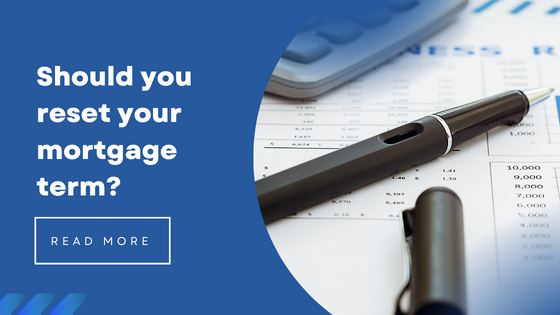Article by Patrick Lynch – Head of Operations
Finance in 2023 has largely been dominated by RBA rate increases, talk of the mortgage cliff facing borrowers coming off low fixed rates, the cost-of-living crisis and inflation. This saw a significant number of Long Property clients review their lending this year. We’ve helped clients achieve improvements in many ways – whether renegotiating interest rates with the existing Lender or, where servicing allows, refinancing elsewhere to achieve better terms (including rate, refinance rebates, etc.).
One consideration that clients should make when refinancing is whether to maintain the remaining loan term or extend to a new 30-year period. The benefit of resetting the mortgage term is reduced repayments. However, it might mean paying more interest over the length of the loan.
As per the below table (for illustration only), presuming a $500,000 loan at a 6% interest rate, you can see the impact the loan term can make on the monthly principal and interest repayment and interest.
| Length of loan | Repayment | Total Repayments | Total Interest |
| 30-year term | $2,998 | $1,079,191 | $579,191 |
| 28-year term | $3,076 | $1,033,408 | $533,408 |
| 25-year term | $3,222 | $966,452 | $466,452 |
| 20-year term | $3,582 | $859,717 | $359,717 |
By moving from an existing loan with 28 years remaining to a new 30-year mortgage (no change in rate), your repayment would drop by $78 per month. However, the interest cost increases by c $46,000 over the length of the loan. Switching from 25 years to 30 years reduces the repayment by $224 per month, but the interest cost is c $113k higher. Bear in mind that the above doesn’t consider funds in offset, which can reduce the interest charge, and in fact if all surplus cash flow from longer loan term/ lower repayments were placed in offset, there would be no additional interest incurred.
Another way to achieve lower interest would be to increase the minimum repayment calculated by your new Lender to the repayment you were making at your prior Bank. This of course presumes you can maintain your previous repayment (or more), which might have been the primary reason to refinance. At least, after refinancing, you have the option to increase the repayment if preferred and can always revert to the Lender’s calculated minimum thereafter.
Ultimately, there are several considerations to make when considering a refinance. Please talk to any of the Long Property Brokers if you have any questions.
—
The Long Property blog provides general information only and has been prepared without taking into account your objectives, financial situation or needs. We recommend that you consider whether it is appropriate for your circumstances and your full financial situation will need to be reviewed prior to acceptance of any offer or product. Nothing in this article constitutes legal, tax or financial advice and you should always seek professional advice in relation to your individual circumstances.




